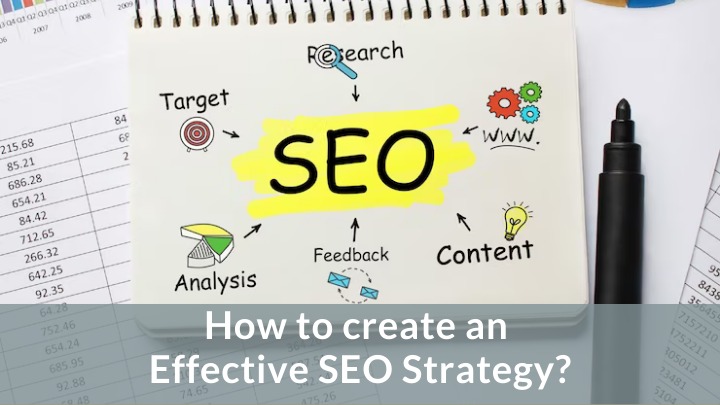
Regarding search engine optimization (SEO), there’s no such thing as a one-size-fits-all approach. However, there are a few proven guidelines of effective SEO strategy that will always work.
These techniques can help your brand capture search traffic throughout the conversion funnel, from researching broad head terms to comparing products and brands at the bottom. In simple terms, SEO is the process of optimizing a website or web page so that it ranks higher in search engine results pages (SERPs). This can be a very effective way to drive traffic to your website, as over 90% of online traffic comes from organic search.
Keyword research
Conducting keyword research is the foundation of a strong Philadelphia SEO implementation plan. This will help you find keywords relevant to your business and products with a high search volume. This involves identifying the keywords that your target audience is searching for and then optimizing your website content to include those keywords. Then you may generate content around these keywords.
To estimate the search volume and competitiveness for certain keywords, utilize tools such as Google’s Keyword Planner, SEMrush, and Ahref. It’s also important to consider search intent when choosing keywords. For example, a keyword with a high search volume may be irrelevant to your audience if used for research or shopping. On the other hand, a keyword with a lower search volume but a high conversion rate may be worth targeting.
Including keywords in metadata on all website pages is important to maximize your ROI. This comprises the page title, URL, meta description and header tags. You can also optimize the content on each page by naturally using keywords to avoid keyword stuffing.
On-Page optimization
Performing on-page optimization is the next step in implementing your SEO implementation plan. It involves applying your keyword research to web page content, ensuring that it offers a suitable answer to search queries in your target market.
This involves optimizing title tags, H1 tags, and meta descriptions. On-page optimization also encompasses techniques that make your website a delightful experience for users, as Google places heavy emphasis on user satisfaction when deciding how websites should rank. Your title tags and meta descriptions should be clear, concise, and informative. They should also include your target keywords, but they should not be too keyword-stuffed.
Title tag optimization is an important on-page SEO factor affecting the text displayed in SERP listings. Similarly, meta descriptions are a key on-page SEO element because they are often used as the clickable snippet of text underneath a search engine result. They also add relevancy to the query being answered by the web page. For both reasons, they should be optimized for the keywords you’re targeting on each page.

Your page content should be well-written and informative. Make sure to follow Google guidelines of SEO for the same. It should be relevant to your target keywords and it should be easy to read and understand.
Mobile responsive
More and more people are using their mobile devices to access the internet. In fact, according to a study by Statista, mobile traffic is expected to account for over 72% of all internet traffic by 2025. This means that it is essential for businesses to optimize their websites for mobile. If your website is not mobile-friendly, you are missing out on a significant portion of potential customers.
The first and foremost thing to do is to go for a responsive design. It means that your website will automatically adjust its layout to fit the screen size of the device it is being viewed on. This ensures that your website will look good and be easy to use on both desktop and mobile devices. You need to also optimize images. You should resize them so that they are not too large, and you should use a compression tool to reduce their file size.
Your website’s navigation should be easy to use on mobile devices. This means using large buttons and clear labels. Once you have made changes to your website to make it more mobile-friendly, it is important to test it on different mobile devices. This will help you to ensure that your website looks good and works well on all devices.
Link building
The quality of a website’s links is the primary determinant of search engine rankings. Google’s algorithm evaluates each page’s link profile to determine its relevance in a particular subject area. In the past, this was based on the number of links a page received from other sites – but today, it considers a wide variety of factors that reflect the quality and context of those pages’ relationships.
In the past, many SEOs focused on keyword strategy and On-Page Optimization and neglected linking methods. But to rank high, you need both of them – and more.
The best way to perform linking is by creating unique content that deserves to be linked to. The Skyscraper technique is a great example of this. However, it would help if you had the right tools to create a workable content plan. This includes a good crawler, a keyword research tool, and a tool that will help you find opportunities for backlinks.

You should try guest blogging for reputed blog owners as a means of an effective SEO strategy. It means to write a blog post for another website in your industry. If the blog post is high-quality and informative, the author of the blog may be willing to link back to your website. One innovative way is to find broken links on other websites and suggesting that they link to your website instead. This is a great way to get backlinks from high-quality websites that are already relevant to your niche.
Other technique is to go for citation building. It’s a very old technique, not too much relevant in today’s age. But, you never know, it can also give you some client. This SEO strategy involves getting your website listed in directories and other online sources. When you get your website listed in a directory, be sure to include a backlink to your website.
Social media
You must work with social media as part of your SEO strategy to take advantage of a huge opportunity. While many SEOs and social media managers may feel like they operate in different worlds, it’s important to work together to share goals, reports, data, insights, and strategies so that you can both optimize your content for SEO and promote it on social media.
To maximize the effectiveness of your SEO implementation plan, you’ll want to conduct social media research to understand the keywords your audience uses on social media and how those words are used in conversations. This will help you create more keyword-optimized content and effectively target your social media messaging.
Social media is the perfect place to build brand awareness and promote your website’s content. The more people see your content, the more likely they are to click and read it. Social media users are also more likely to share your content with their social networks, further amplifying its visibility. While social shares are not a direct ranking factor, they can positively impact metrics such as time on site and page views.
According to a recent a study by Backlinko, the average website receives 11.4% of its traffic from organic search. By following this step by step SEO guide, you can improve your website’s ranking and drive more traffic to your site.
As a conclusion of this effective SEO strategy article, it is also important to regularly review all these and make changes as needed. The parameters of SEO is constantly changing, so it is important to stay up-to-date on the latest trends and best practices. Doing so will help your website rank higher in search results and attract more visitors for years to come.
